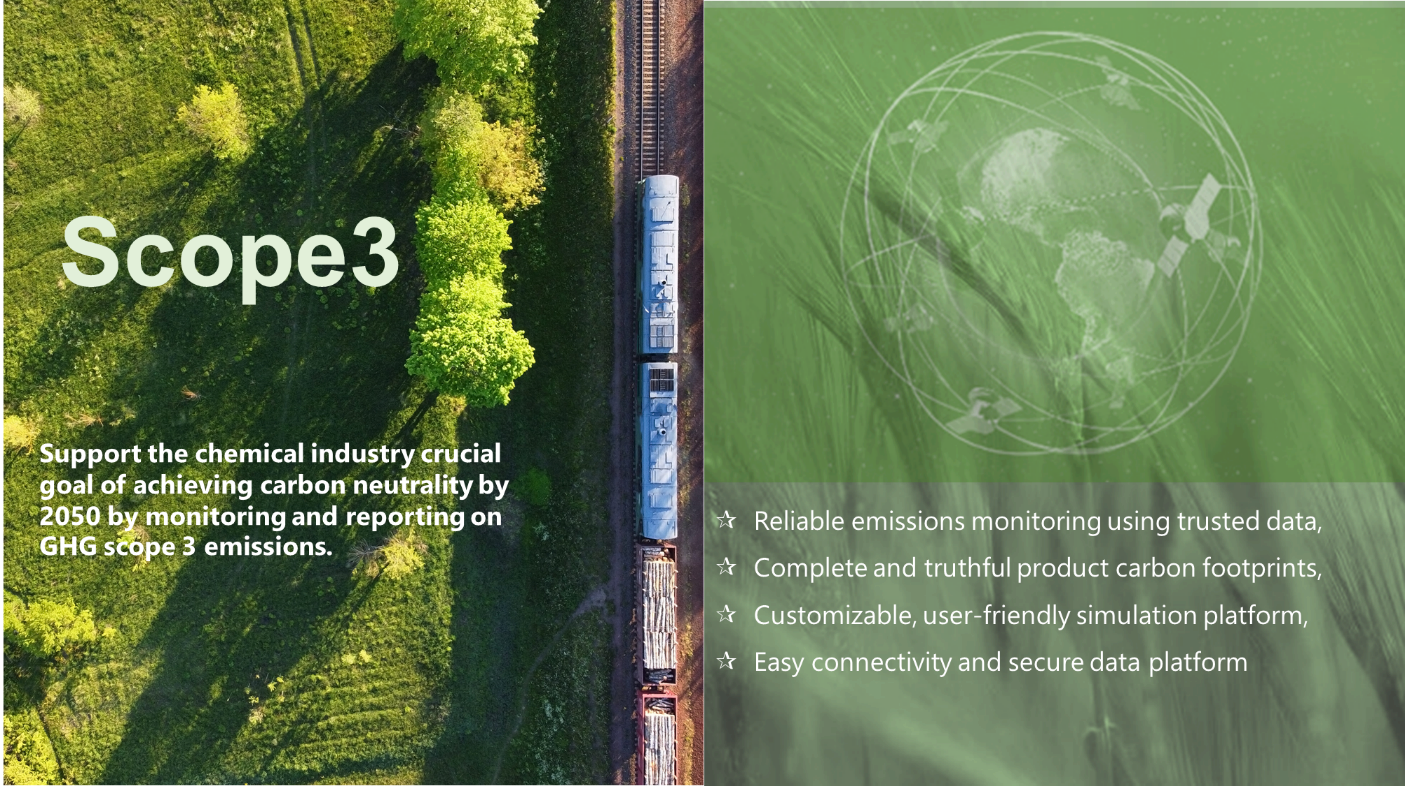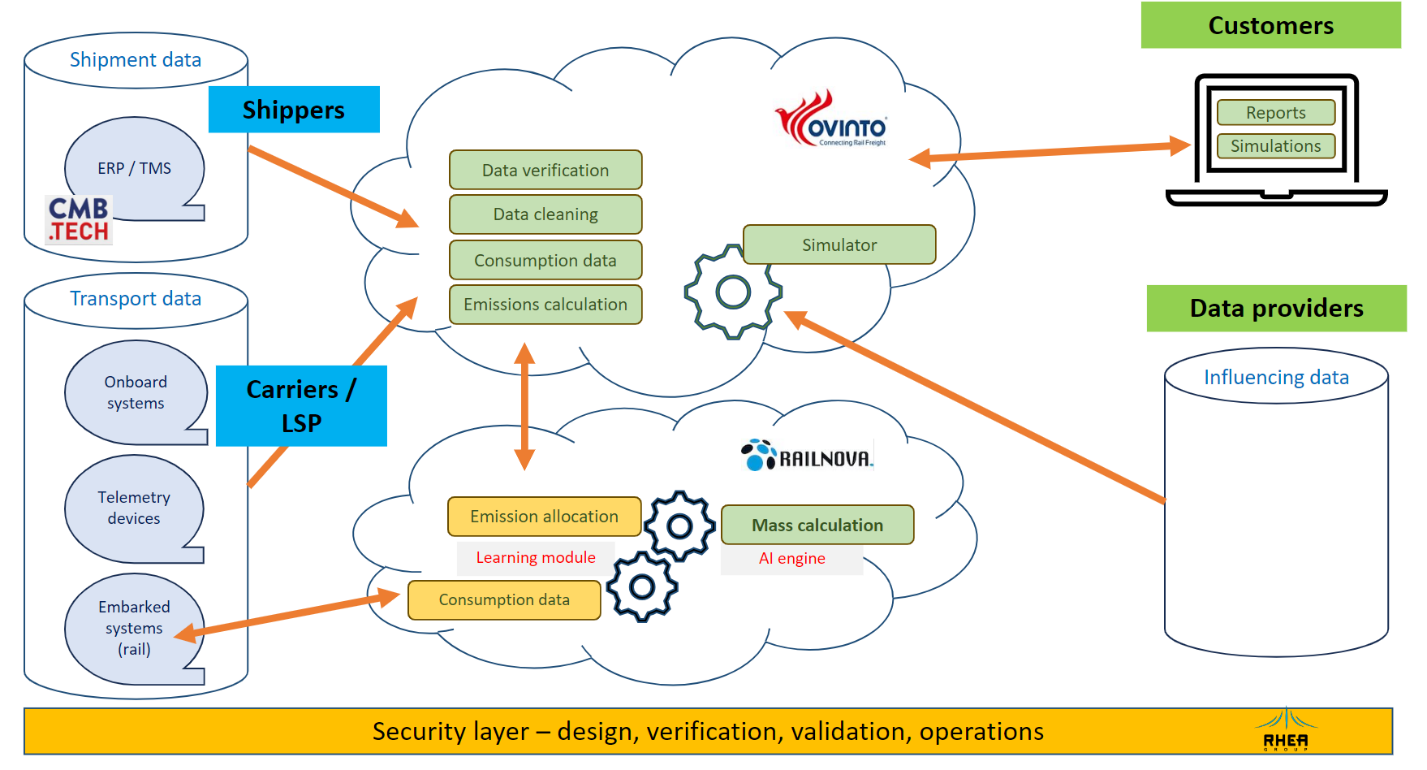
Objectives of the service

The Scope3 application stands for a user-friendly, reliable, and secure transportation emissions monitoring and simulation tool, making full use of trusted primary data.
As a demonstration project, Scope3 aims at creating a comprehensive solution for gathering primary transportation data and developing a user-friendly tool to monitor GHG Scope 3 emissions. It involves building a route and emissions simulation tool using high-quality data collected from all stakeholders. The project will provide an Emissions Monitoring Platform with an automated allocation mechanism to highlight the lower carbon footprint of railways. Additionally, it will offer a Supply Chain Emissions Simulator for comparing transport modes and feedstocks, aiding in cost and environmental impact analysis. A Cybersecurity Foundation will ensure end-to-end security monitoring of commercially sensitive data. Overall, the project targets industrial companies and carriers, offering them the ability to accurately calculate GHG emissions using primary data collected from the original sources, enhancing decision-making, and promoting sustainability in transportation.
Users and their needs
The projected key customers for the services include shippers, such as industrial companies in the chemical industry seeking visibility into primary data for GHG emissions calculations and compliance with regulations, as well as transportation companies. Both need to comply with the new regulations and face serious challenges in collecting accurate data from the full logistics services in the supply chain. While initially targeting our current chemicals customers, the infrastructure will be available to other industries. Today, carriers and logistics aggregators lack resources to systematically calculate emissions and will benefit from data collection services in this project. Rail undertakings also express an interest in real-time operational analysis as a lever for pushing a modal shift. Warehouse and cleaning stations operators could be included in a later phase. Industry associations support the project's alignment with their sustainability efforts and aim to enhance visibility and benefiting from improved data quality for standards enhancement. Pilot users intend to expand the solution globally once it has been deployed for Europe. The Emissions Simulator, alongside the Emissions Monitor, assists users in their supply chain decision-making. Data protection and verified processes are essential to ensure user acceptance.
Service/ system concept
Service offering:
Emissions monitoring:
-
Emissions monitoring and reporting tool: provide carriers with a single data repository for detailed energy consumption, facilitating precise GHG emissions calculation and reporting to authorities and customers, and enhance iterative improvement of the Emission Simulator.
-
Data consolidation: enable consolidation of multiple data sources from all stakeholders into coherent reporting blocks for shippers, carriers, LSPs, warehouse operators, and industry associations.
-
Compliance: offer a recognized reporting solution for scope 3 emissions and transport-related emissions, including detailed locomotive consumption reports.
Baseline and impact of emissions reduction initiatives:
-
Set the precise emissions baseline, from real data, allowing to monitor and validate the results of emissions reduction initiatives.
Emissions Simulator:
-
Modal shift: simulate emissions from alternative feedstocks or transport modes, allowing consideration and customization of chosen impact factors.
-
Impact simulation: simulate total emissions or the impact of initiatives such as fuel type changes or route optimization.
-
Optimizes train or truck routing to minimize emissions considering hybridization potential, energy recovery, eco-driving, and idle energy consumption reduction.
Security monitoring:
-
Ensures user access and data security for shippers and carriers, protecting sensitive commercial data and complying with legal requirements.
The platform architecture and the data flows in the projected system are represented in the figures below:

The technical data flow is represented in this picture:

Space Added Value
The "Scope3" project demonstrates the viability of space-based solutions for sustainable services in the European downstream industry and transport sector. It collects precise mileage data from wagons, trucks, or barges using GNSS technology, ensuring data reliability. Telemetry devices for hazardous goods rely on satellite communication for timely data transmission. Advanced AI models, like Railnova's Edge AI, calculate fuel or electricity consumption onboard locomotives, geo-stamping energy data with GNSS data. Fusion of GNSS and real-time locomotive data trains an AI algorithm to determine exact train mass under various conditions, providing a reliable source for comparison with paperwork.
Current Status
The project team has held multiple contacts with shippers and carriers to fully understand their needs and constraints to further specify the user and system requirements. In parallel we attended several workshops or webinars focusing on scrutinizing the regulatory demands (ECTA) and the future technical standard specifications to be used in structured emissions data exchanges (Smart Freight Center).
Preparation for the incoming BDR is concluded, all deliverables supporting this first milestone are undergoing validation by the project participants.





